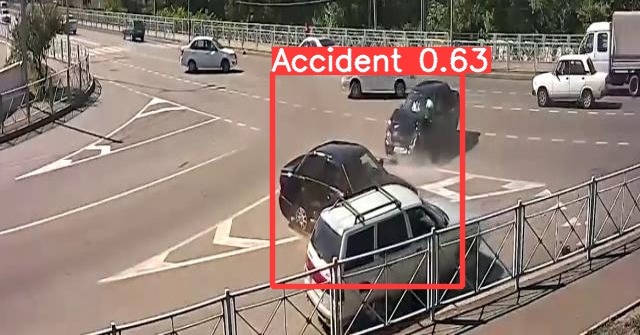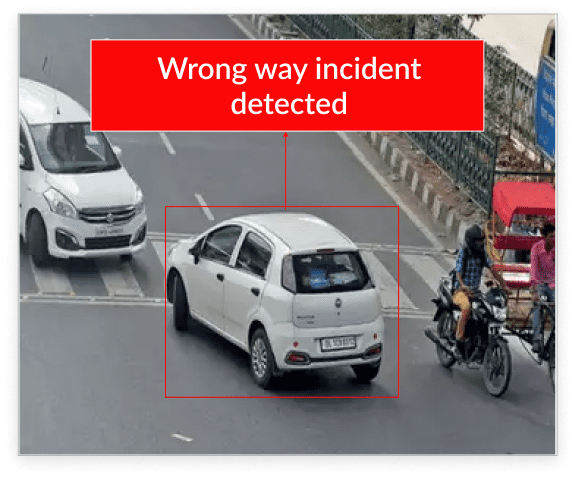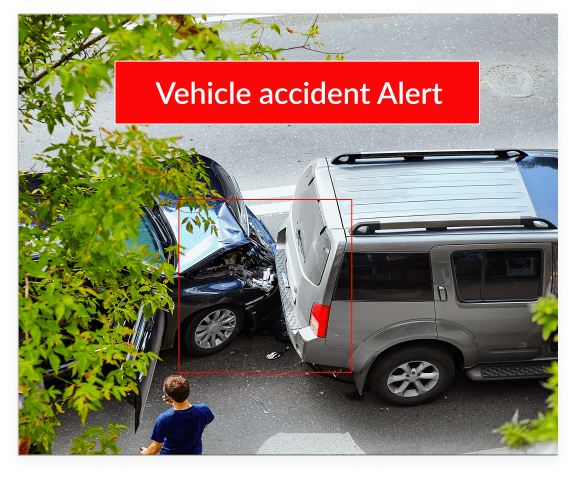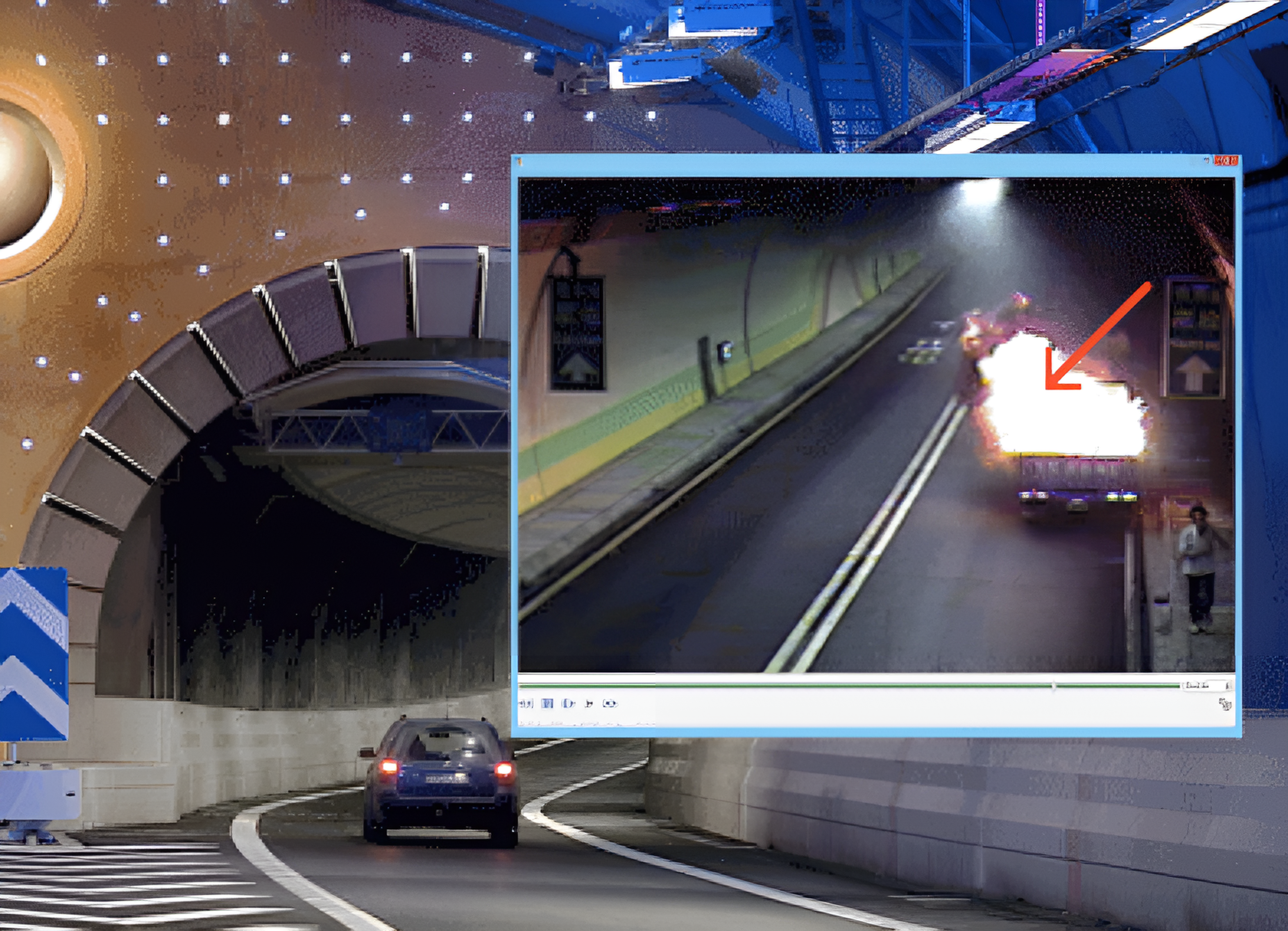Video Incident Detection Systems (VIDS)
In recent years, technological advances have significantly transformed how we monitor and manage traffic. One of the most groundbreaking innovations in this domain is the Video Incident Detection System (VIDS). Leveraging artificial intelligence (AI) and machine learning (ML), VIDS offers a comprehensive solution for real-time traffic monitoring and incident management.
Table of Contents
Video Incident Detection System
A Video Incident Detection System (VIDS) uses advanced AI and machine learning to monitor and analyze traffic in real-time. It detects incidents such as stalled vehicles, wrong-way driving, pedestrian crossings, speed violations, crowd gatherings, and adverse weather conditions. VIDS enhances road safety and traffic management by providing immediate alerts and actionable insights, helping authorities respond quickly to potential hazards and optimize traffic flow.
The Video Incident Detection System (VIDS) offers precise and dependable vehicle tracking, coupled with automatic incident detection, specifically designed for highways and expressways. This advanced system enhances road safety and facilitates the issuance of e-Challans to traffic violators. To promote safer roads and maintain efficient traffic flow, our VIDS is capable of detecting:

Stalled/Stopped Vehicles
One of the primary features of VIDS is the detection of stalled or stopped vehicles on the road. These incidents can cause significant traffic delays and pose safety risks, especially on highways and busy urban streets. VIDS uses real-time video feeds to monitor traffic flow continuously. When a vehicle stops for an unusual amount of time, the system automatically flags it as an incident. Advanced algorithms analyze the vehicle’s position, duration of stoppage, and surrounding traffic conditions to determine whether it is a breakdown, an accident, or a temporary halt. This immediate detection allows for swift intervention by traffic authorities, thereby minimizing the risk of secondary accidents and ensuring smoother traffic flow.
Vehicles Coming from the Opposite Direction
Wrong-way driving is a dangerous traffic violation that can lead to severe accidents. Video Incident Detection Systems are equipped with the capability to detect vehicles moving against the flow of traffic. Using pattern recognition and directional analysis, the system can identify a vehicle traveling in the wrong direction and promptly alert traffic management centers. These alerts can be used to issue immediate warnings to other drivers through dynamic message signs and to dispatch law enforcement to intercept the vehicle. This proactive approach significantly reduces the chances of head-on collisions and enhances overall road safety.

Pedestrian Crossing
Pedestrian safety is a critical concern in urban traffic management. VIDS plays a crucial role in monitoring pedestrian crossings and ensuring their safety. The system can detect pedestrians approaching or crossing the road, even in low-visibility conditions. By analyzing video data, VIDS can identify pedestrian movement patterns and predict potential vehicle conflicts. When a pedestrian is detected, the system can trigger alerts to approaching drivers through traffic signal systems or dedicated pedestrian crossing lights. This functionality enhances pedestrian safety and improves traffic flow by reducing unexpected stops and delays.
Overspeeding and Under-Speeding
Speed management is vital for maintaining road safety and efficiency. VIDS can accurately detect vehicles that are overspeeding or under-speeding. Using advanced image processing techniques, the system measures the speed of each vehicle in real-time. When a vehicle exceeds the speed limit or moves significantly slower than the average traffic speed, it is flagged by the system. These detections can be used to issue automatic speed violation tickets or to alert traffic authorities for further action. Additionally, speed data collected by VIDS can be analyzed to identify patterns and hotspots of speed-related incidents, enabling targeted enforcement and infrastructural improvements.
Crowd Gathering
Large gatherings of people on or near roadways can indicate various scenarios, from public events to emergencies. VIDS can detect unusual crowd formations by analyzing video footage in real-time. The system uses AI algorithms to identify and count the number of people in a specific area, distinguishing between normal pedestrian traffic and potential crowd gatherings. When a crowd is detected, the system can notify traffic authorities, who can then assess the situation and take necessary measures, such as deploying additional personnel or rerouting traffic. This capability is particularly useful for managing crowds during large public events, protests, or emergencies, ensuring public safety and smooth traffic operations.
Weather Status: Normal Conditions, Smoke, or Fog
Weather conditions have a significant impact on road safety and traffic flow. VIDS can monitor and analyze weather conditions by examining video feeds. The system can detect normal weather, as well as adverse conditions like smoke, fog, or heavy rain. By recognizing these conditions, VIDS can provide real-time updates to drivers through variable message signs or navigation apps, advising them to adjust their driving behavior accordingly. In the event of reduced visibility due to fog or smoke, the system can trigger alerts to reduce speed limits and increase the spacing between vehicles, thereby preventing accidents and ensuring safer driving conditions.
Acceleration/Deceleration
Monitoring vehicle acceleration and deceleration patterns is crucial for understanding traffic dynamics and identifying potential hazards. VIDS can track individual vehicles’ acceleration and deceleration rates by analyzing their speed changes over time. Sudden acceleration or deceleration can indicate aggressive driving, potential collisions, or traffic congestion. By detecting these patterns, the system can generate alerts for traffic authorities to investigate and address the underlying causes. Additionally, analyzing acceleration and deceleration data helps optimize traffic signal timings and improve overall traffic flow, reducing the likelihood of accidents caused by abrupt speed changes.

Traffic Status: Congestion, Dense, Delay, Stop-and-Go, Normal
Understanding the overall traffic status is essential for effective traffic management. VIDS provides comprehensive insights into traffic conditions by categorizing them into various states such as congestion, dense traffic, delays, stop-and-go patterns, and normal flow. By continuously analyzing video feeds, the system can identify areas of congestion, measure traffic density, and detect stop-and-go movements. These insights enable traffic authorities to implement real-time traffic management strategies, such as adjusting signal timings, deploying traffic control personnel, or providing alternative route suggestions to drivers. Accurate traffic status information also helps reduce travel times, minimize fuel consumption, and lower emissions, contributing to a more sustainable urban environment.
No Helmets and Triple Riding
Ensuring compliance with traffic safety regulations is crucial for preventing accidents and fatalities. VIDS can detect violations such as riding without helmets and triple riding on motorcycles. The system uses video analysis to identify motorcyclists and passengers, checking for the presence of helmets and counting the number of riders. The system can capture the vehicle’s license plate and generate automatic notifications or fines when a violation is detected. This automated enforcement helps in improving compliance with safety regulations and reducing the risk of severe injuries in case of accidents. By promoting safer riding practices, VIDS contributes to overall road safety.
Real-world Implementation and Challenges
Real-world Implementation
Several cities around the world have already begun integrating VIDS into their traffic management systems. For instance, Singapore has implemented an Intelligent Transport System (ITS) that incorporates VIDS to monitor traffic conditions, detect incidents, and manage traffic signals in real-time. Similarly, cities like London, New York, and Tokyo are using VIDS to enhance their traffic monitoring capabilities and improve road safety.
These implementations often involve the installation of high-resolution cameras at strategic locations such as intersections, highways, and pedestrian crossings. The video feeds from these cameras are transmitted to central traffic management centers where advanced AI algorithms analyze the data in real-time. The insights generated by these systems enable traffic authorities to make informed decisions and take timely actions to manage traffic and enhance safety.

Challenges and Future Directions
Despite the numerous benefits, the implementation of VIDS also faces several challenges. One of the primary challenges is the high cost of installation and maintenance of the cameras and associated infrastructure. Additionally, ensuring the accuracy and reliability of the system in varying weather conditions and during night-time can be challenging. The processing and storage of vast amounts of video data also require significant computational resources.
Privacy concerns are another critical issue. The continuous monitoring of public spaces raises questions about the potential misuse of video data and the need for stringent regulations to protect individuals’ privacy.
To address these challenges, ongoing research and development focus on improving VIDS’s cost-effectiveness, accuracy, and reliability. Innovations in camera technology, such as the use of thermal imaging and low-light cameras, can enhance the system’s performance in adverse conditions. Advances in AI and ML algorithms can improve the accuracy of incident detection and reduce false positives.
Moreover, the integration of VIDS with other smart city technologies, such as connected vehicles and IoT sensors, can provide a more comprehensive and efficient traffic management solution. Developing robust data privacy frameworks and policies is also crucial to address privacy concerns and ensure the ethical use of video data.
Conclusion
Video Incident Detection Systems represent a significant leap forward in traffic management and road safety. By harnessing the power of AI and ML, these systems offer real-time monitoring and detection of various traffic incidents and conditions. From identifying stalled vehicles and wrong-way driving to monitoring pedestrian crossings and detecting speed violations, VIDS provides a comprehensive solution for enhancing road safety and optimizing traffic flow. Additionally, the ability to analyze crowd gatherings, weather conditions, acceleration patterns, and overall traffic status enables traffic authorities to implement proactive measures and respond swiftly to emerging situations.
As urban areas continue to grow and traffic volumes increase, the adoption of VIDS will play a pivotal role in creating safer, more efficient, and sustainable transportation networks. By integrating these advanced systems into existing traffic management infrastructure, cities can reduce accidents, minimize traffic congestion, and improve the overall driving experience for commuters. The future of road safety lies in the intelligent monitoring and management capabilities offered by Video Incident Detection Systems, paving the way for smarter and safer cities.

